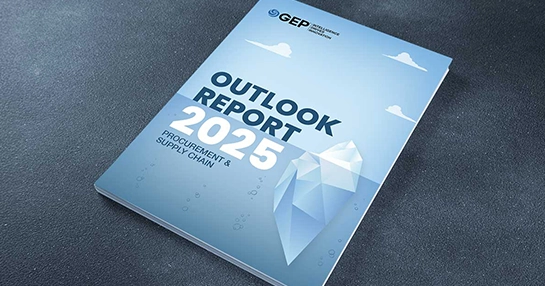
Plan to Get More Out of Contracts? Align Negotiations with Source-to-Contract (S2C)
- S2C makes negotiation a continuous, value-driven process.
- The use of data helps to build resilient, innovative contracts.
- Technology and insights reduce manual work and turn negotiations future-proof.
September 30, 2025 | Procurement Software 5 minutes read
Have you ever wondered why so many contracts, despite months of effort, still fail to deliver the promised savings or value? It’s rarely because procurement teams don’t negotiate hard enough. More often, the failure lies in how negotiation is positioned. If it’s treated as a single event—something that happens after sourcing is done and before signatures go on paper—the outcome is always limited.
That’s where Source-to-Contract (S2C) comes in. By embedding negotiation into the broader S2C process, contracts stop being static documents and start becoming strategic levers for growth, risk management, and resilience.
Ready to Get More Value From Your Contracts?
Turn your contracts into real drivers of value, resilience, and growth
What Exactly Is S2C and Why Does It Change the Game?
Source-to-Contract is the full journey from identifying a business need to signing a contract. Unlike traditional procurement, which focuses narrowly on buying at the lowest cost, S2C takes a systems view. It connects spend analysis, supplier evaluation, bidding, negotiation, and contract management into one continuous process.
Why is this important? Because business needs are complex and constantly shifting. If you treat each step in isolation—spend analysis in one silo, negotiation in another—you lose visibility and consistency. A supplier might look affordable on paper but create hidden risks down the line. By linking the stages, S2C creates contracts that reflect reality, not just price tags.
Why Negotiation Sits at the Heart of S2C
Negotiation decides more than numbers. It defines how risk is shared, how suppliers respond in crises, and how innovation is brought to the table.
When negotiation happens outside S2C, it becomes tactical and reactive — focused only on squeezing cost. When it happens inside S2C, it becomes strategic. The difference?
Instead of negotiating on incomplete information, teams walk in armed with spend data and performance insights.
Instead of focusing only on “lowest bid,” they balance quality, delivery, and risk.
Instead of pushing suppliers into a corner, they build contracts that strengthen partnerships.
In other words: negotiation stops being a battle and starts being a blueprint for long-term value.
Ready to put agentic AI to work in your procurement function?
Download The Agentic AI Playbook for Procurement Pros to see how leading organisations are moving from automation to true autonomy
Best Practices for Optimizing S2C in Contract Negotiation
1. Transparency and Communication
Unclear expectations slow down negotiations and damage trust. Set up structured communication channels such as regular check-ins with suppliers, clear internal reporting, and documented requirements that everyone can access. Use collaboration platforms or contract lifecycle tools so all parties see the same information in real time. This speeds up decision-making and reduces disputes after signing.
2. Spend Analysis
We know where negotiations without data takes us. Leaders centralize spend data across departments, categorize it properly, and then apply spend analytics to identify pricing patterns, wasted spend, or supplier performance issues. Many organizations use dashboards that track suppliers over time, making leverage points clear before negotiations begin.
3. Sourcing Strategy
A strategy provides direction. Define must-haves, acceptable trade-offs, and absolute deal-breakers before going to market. Develop playbooks for negotiators that outline fallback positions and escalation routes. This will ensure consistency throughout teams and prevent suppliers from exploiting any gaps there should be.
4. Cross-Functional Collaboration
You know that procurement on its own can’t see the full picture. We need all hands on board. Finance will monitor budgets while legal team ensures compliance, and operations know supplier performance on the ground. Build integrated sourcing teams from the start, run joint workshops to align priorities, and use shared digital workspaces to review draft contracts together. This creates stronger and more practical agreements.
5. Continuous Monitoring and Auditing
Contracts must adapt as markets and suppliers change. Create a contract performance dashboard with KPIs such as delivery times, quality scores, and compliance status. Hold quarterly supplier reviews and biannual internal audits to capture lessons learned. Feeding this information back into the sourcing cycle makes each new negotiation more effective.
How Technology Strengthens S2C Negotiations
E-Sourcing Platforms
Running bids manually is messy. Spreadsheets get lost, evaluations become subjective, and the whole process drags on. E-sourcing platforms fix this by putting it all in one place. So, suppliers submit bids online, criteria are applied consistently, and comparisons are instant. The result? A fair process that moves quickly and gives negotiators better leverage.
Contract Management Software
We’ve all seen contracts buried in inboxes or forgotten on shared drives. What happens then? Deadlines slip, compliance is missed, and people end up working with different versions. This is where contract management software comes in. It solves this by centralizing everything. Renewal reminders pop up automatically, risks are flagged early, and everyone is able to work from a single, accurate source. Negotiations become smoother because the details are always under control.
ERP Integration
Negotiating without real-time financial visibility is like trying to drive in the dark. Integrating S2C tools with ERP systems switches the headlights on. This alignment makes negotiations more grounded and prevents agreements that the business can’t sustain.
Workflow Automation
Approvals and redlining are often where negotiations grind to a halt. Automation keeps the process flowing by routing tasks to the right people, tracking status, and cutting down on manual back-and-forth. That means faster turnaround, fewer mistakes, and more time for procurement to focus on adding value instead of chasing signatures.
What Are the Key Techniques for Effective Contract Negotiation in S2C?
1. Build Strong Supplier Relationships
Trust creates flexibility, faster problem-solving, and opportunities for innovation that pure cost-cutting cannot deliver.
2. Use Market Intelligence as Leverage
Knowledge of price trends, competitor deals, and supplier risks shifts negotiations from guesswork to informed advantage.
3. Back Decisions with Data Analytics
Spend analysis, benchmarking, and forecasting provide evidence suppliers cannot ignore, building credibility at the table.
4. Look Beyond Unit Price
Advanced levers like risk-sharing, service guarantees, and sustainability commitments protect long-term value and reduce risks.
5. Keep Communication Transparent
Open, clear communication prevents disputes, builds trust, and ensures smoother contract execution.
What Does the Future of S2C and Contract Negotiation Look Like?
Machine Learning and Artificial Intelligence
AI is already transforming the source-to-contract process. It can scan thousands of contracts, find risks, and even suggest negotiation clauses. This means procurement teams spend less time on manual work and more time on strategy.
Predictive Analytics
Predictive analytics tells us not only where we are today but also where we might be tomorrow. A source to contract software ’s predictive analytics helps anticipate supplier risks or market changes. That foresight helps to negotiate terms that stay relevant even in uncertain times.
Ethical Sourcing and Sustainability
Contracts are no longer only about price. More companies now care about sustainability, ethical labor, and environmental impact. Negotiations that include these values build stronger brand reputation and long-term trust.
Contracts Emerge as Powerful Tools
Optimizing S2C in contract negotiation is not only about efficiency. It is about making contracts powerful tools for growth, risk reduction, and strong partnerships. When negotiation is integrated into the S2C process, procurement stops firefighting and starts building.
FAQs
The best practices include transparent communication; deep spend analysis; clear sourcing strategy; collaboration across departments; and continuous monitoring. These practices make negotiations fair, strong, and future-ready.
S2C improves negotiations by giving structure, visibility, and data. It reduces risks, cuts costs, and strengthens supplier partnerships. Businesses negotiate smarter because they work with a full picture, not just partial information.



